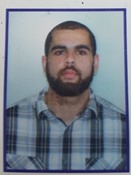Program Information
Image Comparison Of Commercially Available Device-Based And Deviceless 4DCT Reconstruction
D Sprouts1*, N Pettersson2 , S Jani2 , T Atwood2 , L Cervino2 , (1) San Diego State University,San Diego, CA,(2) UC San Diego, La Jolla, CA
Presentations
TU-C2-GePD-J(B)-3 (Tuesday, August 1, 2017) 10:00 AM - 10:30 AM Room: Joint Imaging-Therapy ePoster Lounge - B
Purpose: To investigate image differences between commercially available deviceless and deviced-based 4DCT reconstruction.
Methods: We retrospectively collected data from 35 patients who underwent 4DCT scans for radiation therapy in the thoracic or abdominal region. 4DCT scans were acquired on a GE Lightspeed CT. Two different reconstruction methods were used to reconstruct 4DCT images into 10 phase bins. One used an external breathing monitoring device (RPM, Varian Medical Systems; 4D-RPM) as the breathing surrogate and the other used internal anatomy (Smart Deviceless 4D, GE; 4D-DL). We visually inspected the 4DCTs, paying close attention to motion artifacts in the diaphragm region, and quantified image differences in regions of interest (ROIs) that consisted on the diaphragm region, the body, and, for lung cancer patients, in a region around the tumor. We counted the proportion of voxels within 20 HU in both 4DCTs in these ROIs and calculated the normalized cross-correlation (XCORR), and the structural similarity (SSIM).
Results: : Motion artifacts in the diaphragm region were more common in 4D-RPM than in 4D-DL. Among all investigated patients and bins, the average proportion of voxels within 20 HU was 0.73±0.07 (1 SD) for the body. Corresponding numbers for the diaphragm ROI were 0.68±0.07 and for the lung tumor ROI 0.63±0.16. The average XCORR was 0.97±0.02 for the body, 0.98±0.02 for the diaphragm and 0.97±0.04 for the tumor ROI. Corresponding numbers for the SSIM was 0.97±0.01 for the body, 0.95±0.02 for the diaphragm and 0.94±0.05 for the tumor ROI. In all three ROIs, the calculated image similarity metrics were high.
Conclusion: Overall, 4DCT images by the two methods were visually similar. However, there were more motion artifacts in the diaphragm region for the 4D-RPM than for the 4D-DL, implying that some patients may benefit from internal anatomy-based motion binning.
Contact Email:
